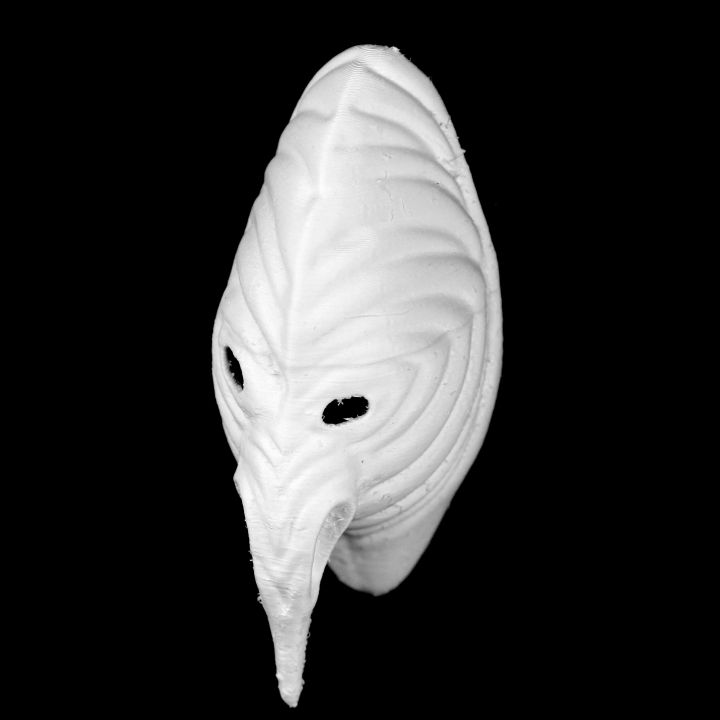
Mask at Quai Branly, Paris
myminifactory
The mask hides as much as it reveals, “denies as much as it affirms”, as Claude Lévi-Strauss asserted. Very often the holder of a secret, the mask conceals that which only the initiated should know. The mask’s power also lies in its capacity to incarnate spirits, a link between man and his ancestors, between the visible and the invisible world. It is inseparable from a mythical context which structures the mode of existence and thought of the majority of traditional societies. Central to the life of a group or a community, the mask, an indispensable intercessor, is always active. This mask was carved by an artist from Tambanum Village, known for its wood carving industry. Masks were carved from soft wood and were decorated with paint made from natural pigments and charcoal. A major theme in Iatmul art is sculpture of the human form, especially men. Masks such as this one frequently feature exaggerated noses, which signify masculinity (women have short noses), and often can refer to a clan’s totems (entities that watch over or assist a group of people).Ancestor worship was fundamental to the Iatmul people, and they believed that ancestral spirits have power over those still living. In addition to ancestral spirits, the Iatmul believed in marsalai, or spirits (usually evil ones), that were never human and also affected the realm of the living. This mask represents a male bush marsalai called a winjumbu, which has the ability to transform into a bird. Birds played a major role in the mythologies of peoples along the Sepik River, and they were frequently featured in Iatmul art. A man would have worn this mask along with an elaborate costume, and he would have imitated a winjumbu’s actions and character at ceremonies honoring rites-of–passage and special events. This mask originates from Papa New Guinea in the village of Hopmagum (north coast) and made in the beginning of the 20th Century. It is made of wood and has traces of pigment. The masks of this region circulate, through exchagnge, between the north coast and the islands. While the forms of reference remain, the length of the nose of the oblique eyes, there is a dynamic stylistic variation in the names, coloured patterns and uses made of these masks from one group to another. This object is part of "Scan The World". Scan the World is a non-profit initiative introduced by MyMiniFactory, through which we are creating a digital archive of fully 3D printable sculptures, artworks and landmarks from across the globe for the public to access for free. Scan the World is an open source, community effort, if you have interesting items around you and would like to contribute, email stw@myminifactory.com to find out how you can help.
With this file you will be able to print Mask at Quai Branly, Paris with your 3D printer. Click on the button and save the file on your computer to work, edit or customize your design. You can also find more 3D designs for printers on Mask at Quai Branly, Paris.
